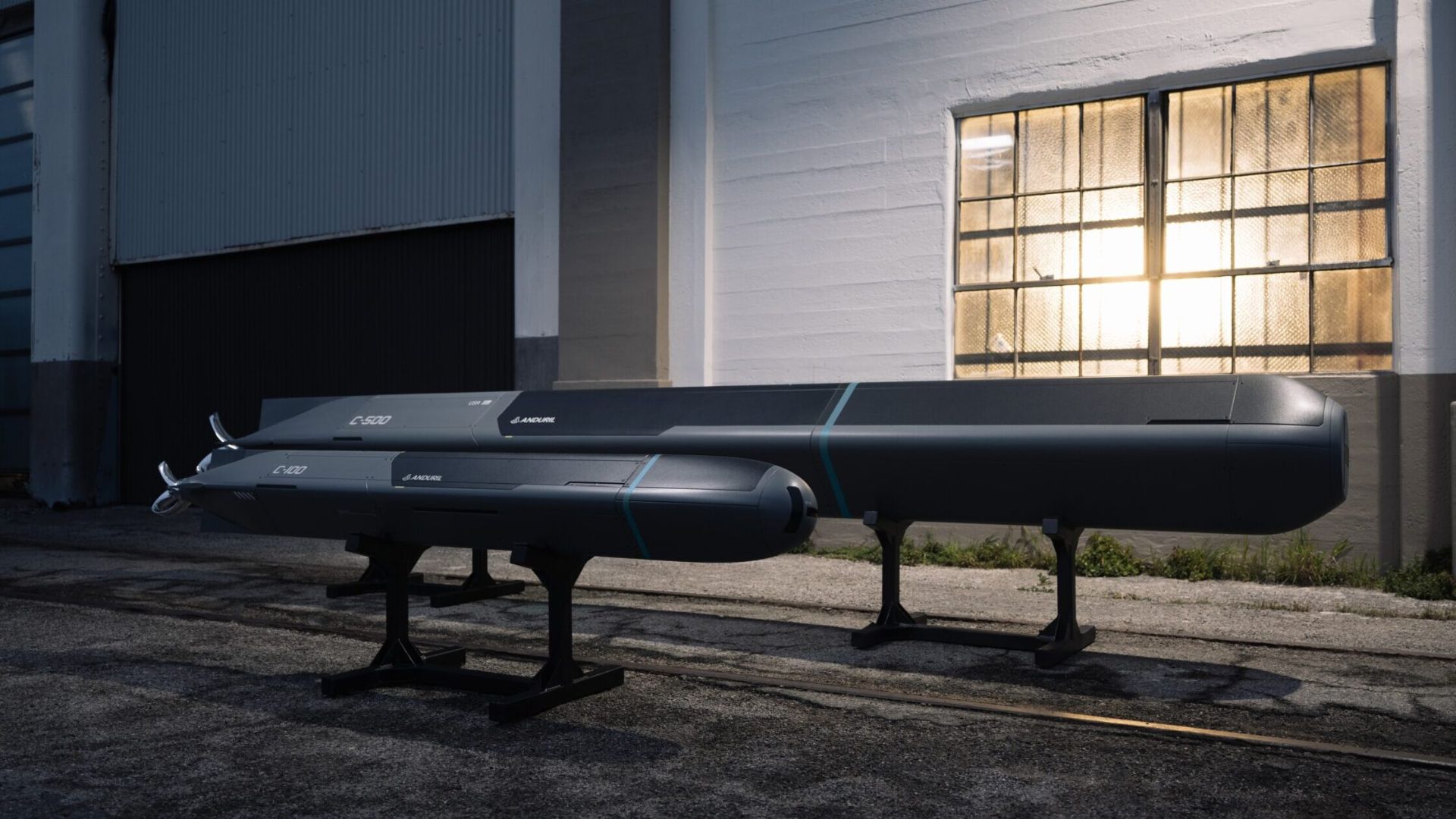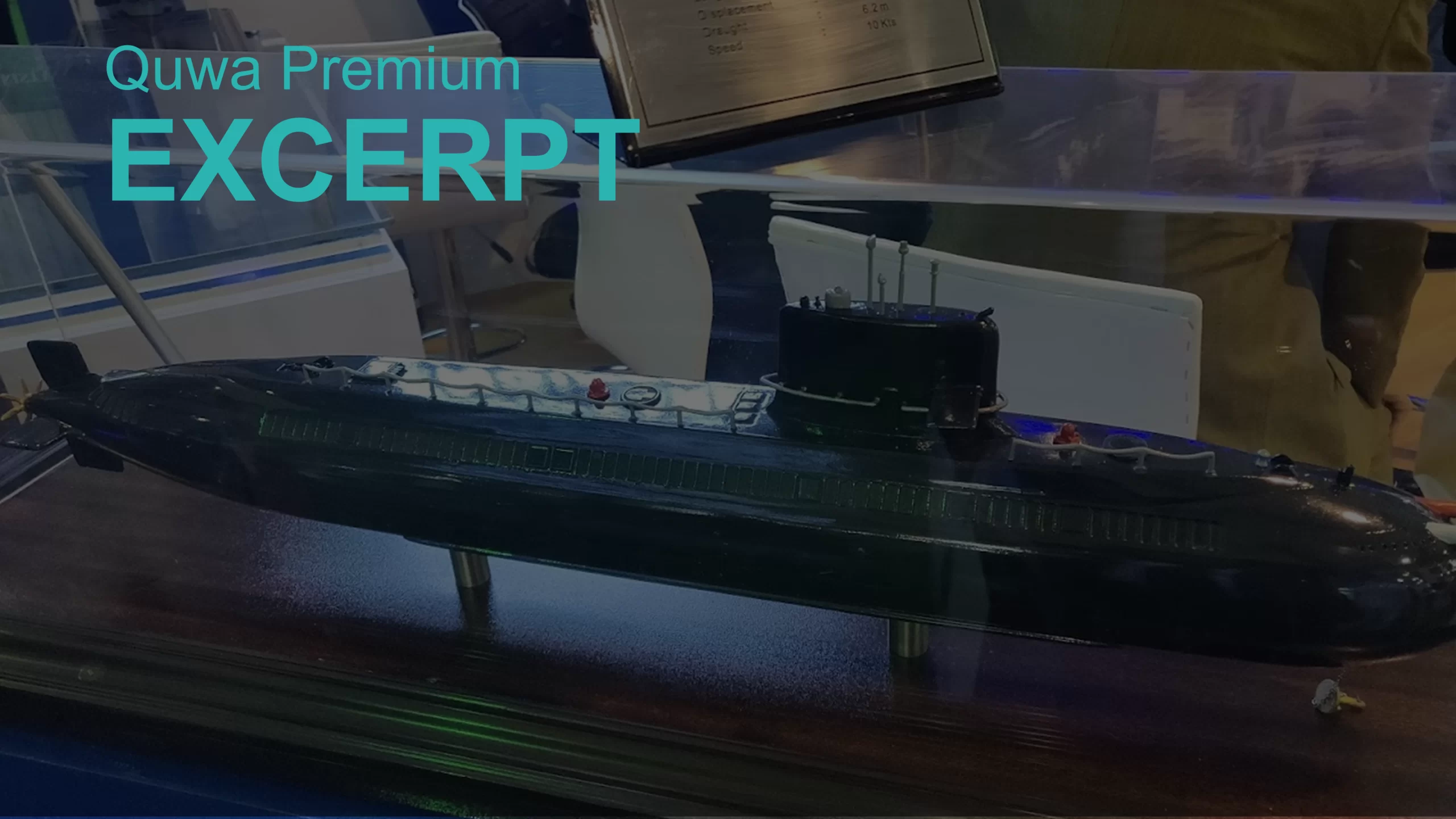1428Views

Anduril Launches Copperhead Family of Autonomous Underwater Vehicles (AUV)
Anduril Industries has unveiled Copperhead, a new family of high-speed Autonomous Underwater Vehicles (AUVs) designed specifically for delivery by autonomous systems.
The announcement represents a significant development in maritime autonomous technology, potentially offering naval forces more flexible and cost-effective underwater capabilities.
The Copperhead series features two primary models with distinct capabilities.
The Copperhead-100 weighs approximately 45 kg, measures approximately 2.7 m in length with a 12.75-inch diameter, while the larger Copperhead-500 weighs 226.7 kg, extends to 4m with a 21-inch width. Both variants can achieve speeds exceeding 30 knots.
Each model is available in a standard configuration and an “M” munition variant.
According to Dr. Shane Arnott, Anduril’s Senior Vice President for Engineering and maritime lead (via The War Zone), the Copperhead-500 offers capabilities comparable to a Mk 48 anti-submarine warfare (ASW) torpedo, while the Copperhead-100 is roughly equivalent to a Mk 54.
Notably, the Copperhead-M is positioned as “the first torpedo capability built to be carried by autonomous systems”
Unlike traditional cylindrical torpedoes, the Copperhead models feature rectangular shapes, a design choice specifically intended to streamline production processes and reduce manufacturing costs.
This approach allows Anduril to focus on high-volume production rather than limited-quantity specialized manufacturing.
The Copperhead family is designed for multiple deployment scenarios and mission profiles. For defence applications, the systems can function as autonomous munitions capable of engaging maritime threats.
In commercial applications, the standard Copperhead variants can be equipped with various sensor packages for search and rescue (SAR) operations, critical infrastructure inspection, and environmental monitoring.
All Copperhead models leverage Anduril’s Lattice AI-driven autonomy software, which enables autonomous operations within parameters set by human operators.
Dr. Arnott explained that operators can define engagement criteria and safety parameters, after which the system can autonomously identify and engage targets within those constraints.
A key feature of the Copperhead design is its integration with other autonomous systems.
The Copperhead-100M and 500M variants are specifically designed to be carried and deployed by larger unmanned underwater vehicles such as Anduril’s Dive-XL (also known as Ghost Shark). A single Dive-XL can reportedly carry dozens of Copperhead-100Ms or multiple Copperhead-500Ms
Notes and Comments
The Copperhead family addresses several persistent challenges in maritime operations.
Traditional torpedo systems remain expensive, production-limited, and typically deployed only from high-value platforms such as submarines and surface vessels.
By developing an autonomous underwater capability that can be mass-produced and deployed from various platforms, including other autonomous systems, Anduril is attempting to create more distributed maritime effects.
For naval forces concerned with potential near-peer conflicts, particularly in the Indo-Pacific region, this approach offers potential advantages.
As Dr. Arnott told the TWZ, “The potential conflict against the PRC is predominantly a maritime challenge. These technologies are designed to address that”.
The ability to field large numbers of autonomous systems could potentially complicate adversary planning and overwhelm defensive systems.
The Copperhead development follows Anduril’s established pattern of focusing on autonomous systems across multiple domains.
The company has previously demonstrated success with its aerial autonomous systems, including involvement with the YFQ-44 unmanned combat aerial vehicle program. The Copperhead represents an extension of this approach into the maritime domain.
For naval planners, the Copperhead concept offers a potential bridge between current capabilities and future operational requirements. As underwater domains become increasingly contested, the ability to deploy autonomous systems in greater numbers may become a critical component of maritime strategy.


